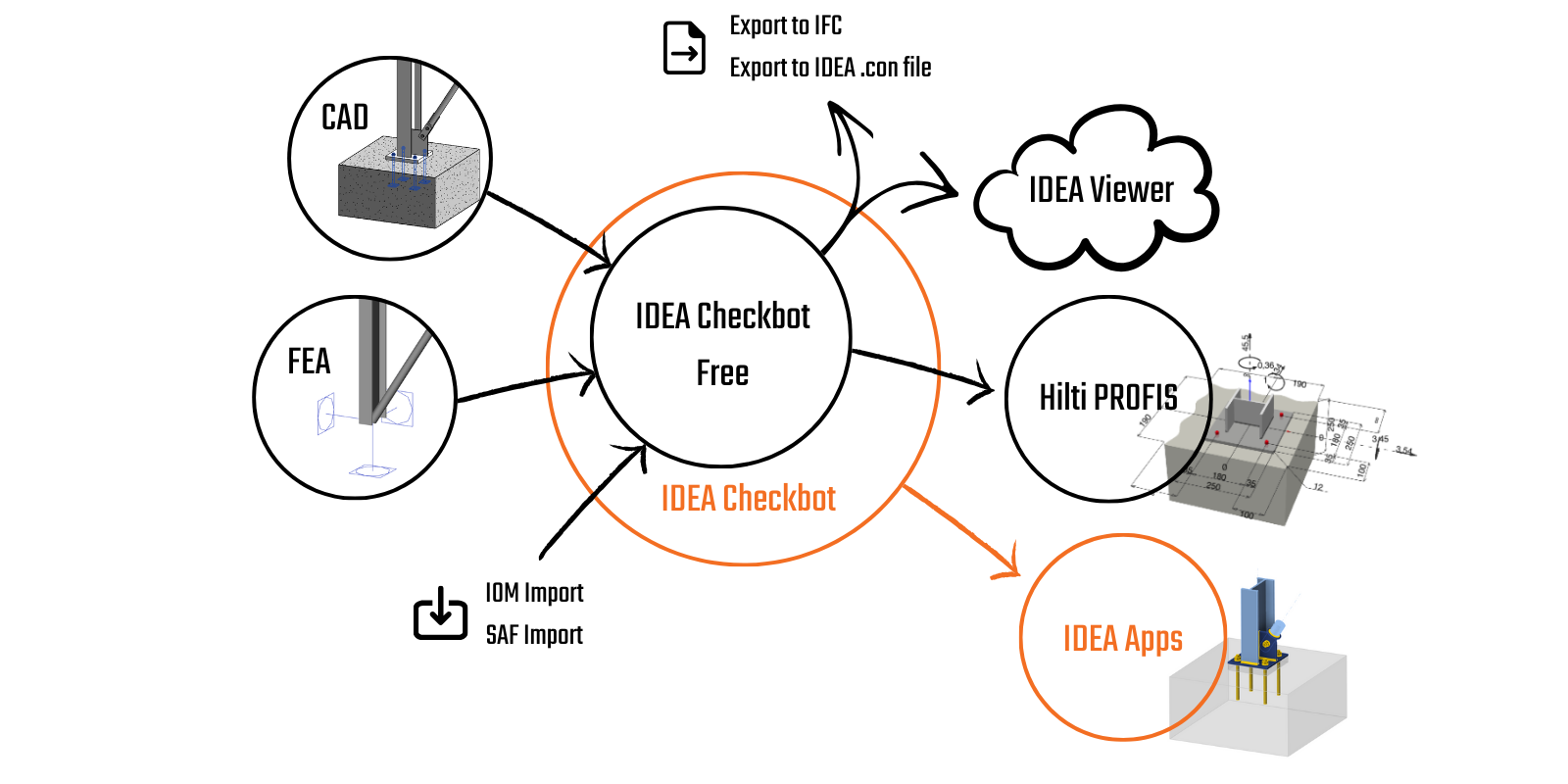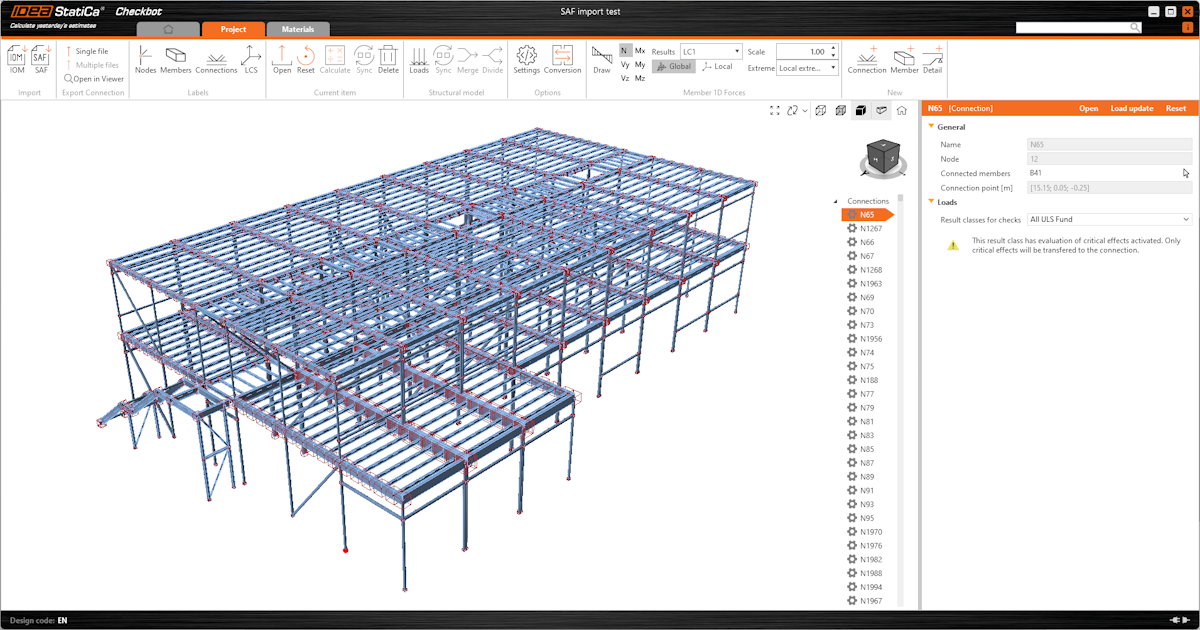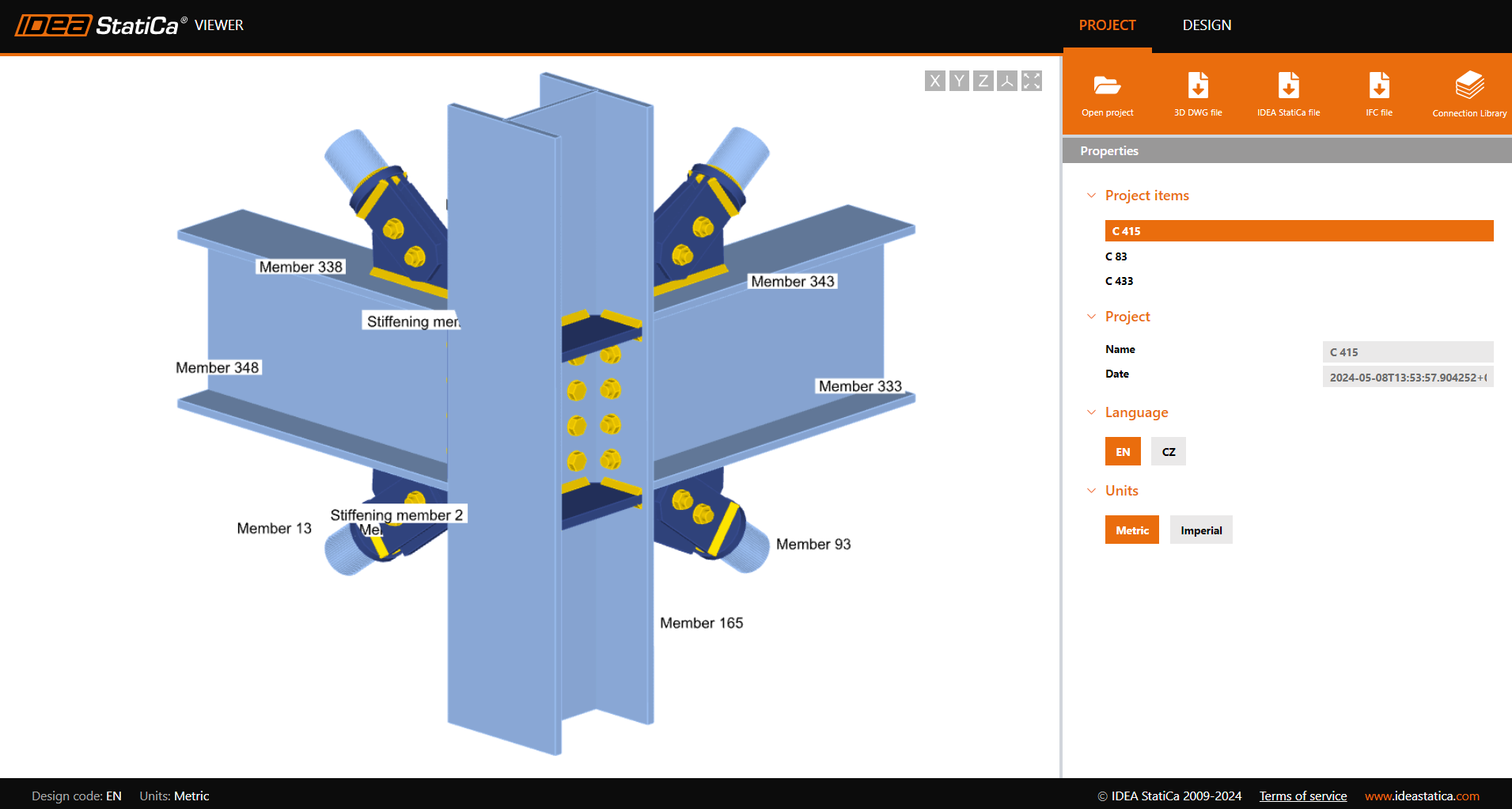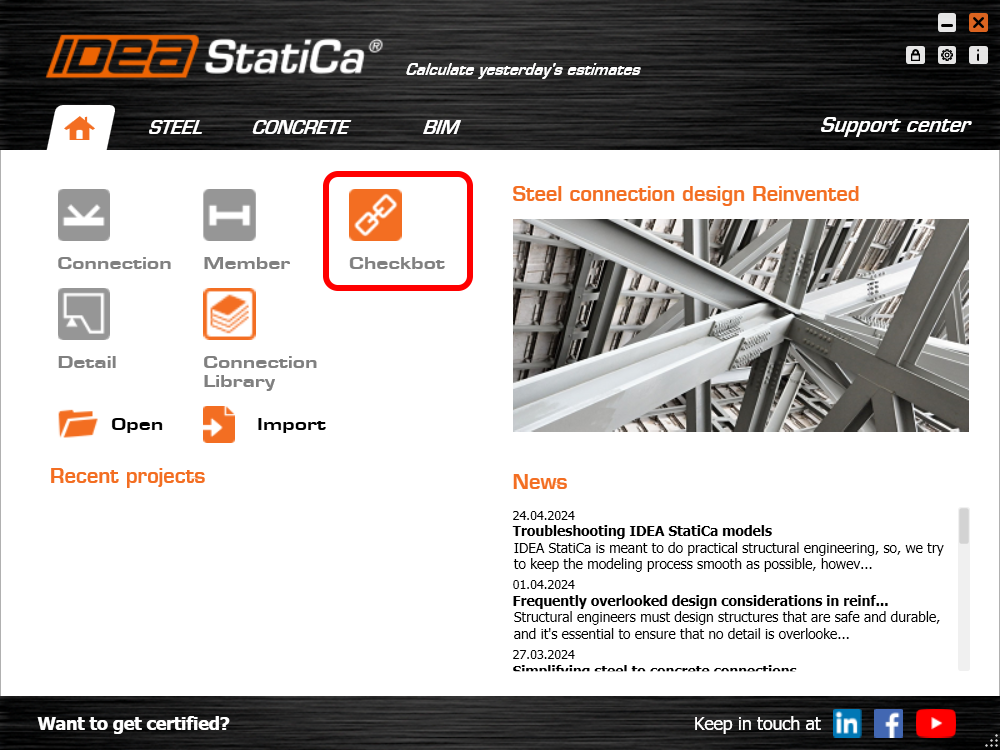Your structural data hub for all stakeholders
This enhancement allows structural engineers to harness most of the IDEA StatiCa Checkbot app's power without the need for a paid license, making it more accessible than ever.
The Checkbot Free application works both as a plugin linked to a specific FEA or CAD tool and as a standalone application capable of importing, managing, and exporting different types of design data. For most of its capabilities, Checkbot does not require a paid license – the only prerequisite is a valid IDEA StatiCa user account. This means that also without the paid, educational, or trial license, users can still leverage the advantages of Checkbot Free's features.
If a user has not yet created an IDEA StatiCa account, an easy step-by-step guide exists to help with setting up a Basic account.
Checkbot is not just a tool, but a complete ecosystem designed to integrate seamlessly with FEA, CAD, and BIM applications. The typical workflow begins when an engineer imports structural data into Checkbot. This can be anything from detailed building models to intricate structural parts. The versatility of Checkbot allows for a smooth transition of data from other design tools, ensuring that engineers start with a comprehensive and accurate base model.
OK, the data is successfully in, what now?
Once the data is imported, engineers can make precise adjustments or changes within Checkbot. This flexibility is essential for tailoring the structural model to specific project requirements or for optimizing the design for efficiency and safety. Whether it's modifying dimensions, altering material properties, or adjusting members' eccentricities, Checkbot provides an intuitive interface that enhances productivity and reduces the likelihood of errors.
In the 3D scene, it's clearly visible what kind of data 'came' and how the model elements relate to each other. A huge benefit is the internal forces are imported together with the geometry parameters if the data source contains them. The list of tools where the data can come from is impressive with several tens of logos, and it's still increasing!
The next step in the workflow is the export of specific parts of the model to specialized applications like Connection, Detail, and Member. This modular approach ensures that each aspect of the structural design is handled by the appropriate tools, enhancing the quality and precision of the final output. For those looking to visualize and share their designs, Checkbot also offers the option to export structural connections into the cloud-based Viewer app. This feature is invaluable for collaborative projects, allowing team members to view and interact with 3D models remotely.
In the Cloud Viewer app, the wild discussions about the design can start. Besides the overall interactive 3D screen, there is comprehensive information about all the components available. So the investigation for sizes, materials, and geometries is a matter of seconds. If the engineer included them, the load effects applied to the model during the analysis are visible in the table as well. Additionally, users can export their models in IFC format or as 3D DWG files, facilitating compatibility and integration with other industry-standard software. This ensures that the data can move seamlessly from design to fabrication and beyond, supporting a comprehensive workflow.
The value of Checkbot extends beyond just its technical capabilities. It can serve a wide range of professionals in the civil engineering field, including draftsmen, detailers, fabricators, assembly workshop workers, and erectors. By bridging the gap between different stages of the construction process, Checkbot enhances collaboration and reduces the risk of miscommunication. Its ability to synchronize projects continuously ensures that everyone is working from the most accurate and up-to-date information.
What are the scenarios where stakeholders will find it useful?
Within the engineering office:
IDEA StatiCa packages are one of the necessities of structural engineering offices. Therefore, the benefits of an 'unchained' Checkbot would be welcomed by them in the first place. Even if the license seats are not available at that moment, there is still an option for the preparation of analysis models for the next workflow phases. The FEA structural model is imported with all available internal forces and the connection models are quickly exported. Once the seat is available again, the work can continue where the "free" part ended.
From engineer to detailer:
When the BIM 3D model or 2D drawings need to be polished according to the engineer's requirements, it is more useful to work with the original 3D model the engineer prepared instead of following some hand drafts – therefore, it's valuable to share the Checkbot project. Although the draftsman can't open the analytical models, with a Basic account in Checkbot Free, they can still open every specific connection model and either investigate all the details directly in Viewer, or export the IFC file and import it into their BIM model.
From detailer to engineer:
Once the contractor, fabricator, or detailer realizes that changes need to be made to the engineer's original design, there are several options for how to communicate the changes. But how can you avoid most of the possible errors during copy-pasting all the numbers and parameters? The draftsman simply imports their changes into Checkbot, exports and sends the IDEA connection files directly to the engineer for code-rechecking.
Is it the end of CAD plugins?
For some time, a part of the fore-mentioned steps were covered by Free CAD plugins for Revit, Advance Steel, and Tekla structures, and these plugins will continue to work further with older versions. But starting from May 2024, Checkbot Free steps in and covers all the functionalities previously provided by these CAD plugins. The biggest advantage is obvious – one tool rules them all now. It means a common setup file, one installation, one icon, and the same workflow.
Summary
By 'freeing' the Checkbot, the barriers to accessing this powerful tool have been significantly lowered, empowering more professionals to improve their workflows, enhance project outcomes, and ultimately contribute to safer, more efficient structural designs.
Discussions about BIM standards have been in the air for some time, but after twenty years, most of these standards are being built under the roofs of specific developers. Fortunately, there are companies trying successfully to bring solutions for how to make these disparate 'standards' speak to each other.








